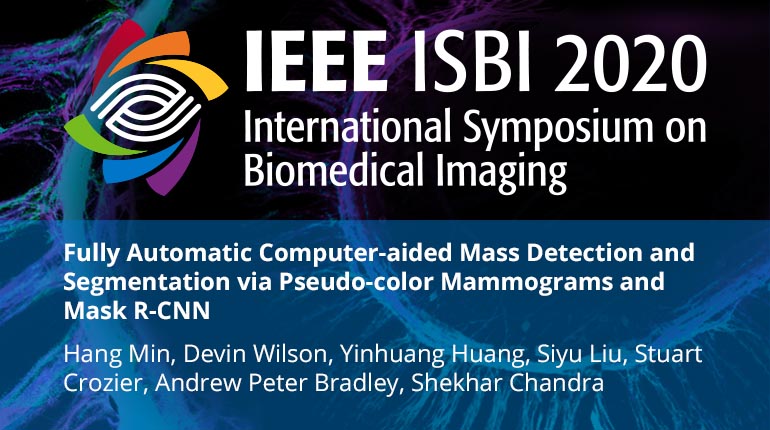
Already purchased this program?
Login to View
This video program is a part of the Premium package:
Fully Automatic Computer-aided Mass Detection and Segmentation via Pseudo-color Mammograms and Mask R-CNN
- IEEE MemberUS $11.00
- Society MemberUS $0.00
- IEEE Student MemberUS $11.00
- Non-IEEE MemberUS $15.00
Fully Automatic Computer-aided Mass Detection and Segmentation via Pseudo-color Mammograms and Mask R-CNN
Mammographic mass detection and segmentation are usually performed as serial and separate tasks, with segmentation often only performed on manually confirmed true positive detections in previous studies. We propose a fully-integrated computer-aided detection (CAD) system for simultaneous mammographic mass detection and segmentation without user intervention. The proposed CAD only consists of a pseudo-color image generation and a mass detection-segmentation stage based on Mask R-CNN. Grayscale mammograms are transformed into pseudo-color images based on multi-scale morphological sifting where mass-like patterns are enhanced to improve the performance of Mask R-CNN. Transfer learning with the Mask R-CNN is then adopted to simultaneously detect and segment masses on the pseudo-color images. Evaluated on the public dataset INbreast, the method outperforms the state-of-the-art methods by achieving an average true positive rate of 0.90 at 0.9 false positive per image and an average Dice similarity index of 0.88 for mass segmentation.
Mammographic mass detection and segmentation are usually performed as serial and separate tasks, with segmentation often only performed on manually confirmed true positive detections in previous studies. We propose a fully-integrated computer-aided detection (CAD) system for simultaneous mammographic mass detection and segmentation without user intervention. The proposed CAD only consists of a pseudo-color image generation and a mass detection-segmentation stage based on Mask R-CNN. Grayscale mammograms are transformed into pseudo-color images based on multi-scale morphological sifting where mass-like patterns are enhanced to improve the performance of Mask R-CNN. Transfer learning with the Mask R-CNN is then adopted to simultaneously detect and segment masses on the pseudo-color images. Evaluated on the public dataset INbreast, the method outperforms the state-of-the-art methods by achieving an average true positive rate of 0.90 at 0.9 false positive per image and an average Dice similarity index of 0.88 for mass segmentation.
 Cart
Cart Create Account
Create Account Sign In
Sign In





